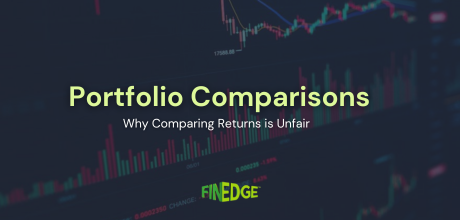3 Ways in Which Debt Mutual Funds Score Over Fixed Deposits

Debt Mutual Funds offer tax efficiency, better returns over time, and easy liquidity—making them a smarter choice than FDs for long-term, low-risk investments. Before investing, seek expert advice to navigate the nuances effectively.
Of late, several Mutual Fund investors who had migrated from Fixed Deposits in response to AMFI’s highly effective “Mutual Funds Sahi Hai” campaign, are seriously considering reversing their tracks. After all, FD rates are on the rise and debt funds haven’t exactly delivered stellar returns in recent times. While there’s some merit to the decision of moving 1-year money back to FD’s, there are several reasons why your low risk, 3 year plus corpus should continue to be invested into Debt Funds. Here are three of them for you to consider.
More Tax Efficiency
While your FD returns are clubbed with your income and taxed as per your marginal tax bracket, Debt Mutual Funds have the benefit of indexation. If you hold on to your debt mutual fund investment for more than 3 years, the purchase price of your units gets indexed basis the change in CII (Cost Inflation Index) between the corresponding Financial Years. For those individuals who fall in the highest marginal tax brackets, this can significantly increase post tax returns. In fact, even in relatively benign-inflation times like these, the effective tax on debt fund profits after 3 years would work out to just 8-10% of the overall profits – a tax efficiency level at par with equities!
Potentially Higher Returns
Fixed Deposits may provide guaranteed returns, but a well-selected portfolio of debt funds can deliver much higher long-term returns than deposits. A case in point is the year 2018, which was a challenging one for debt funds. Despite this, the top performing debt funds outperformed Fixed Deposits by as much as 150-200 basis points. Also, as returns from debt mutual funds get compounded whereas FD returns do not, the effective ‘return gap’ as measured in terms of CAGR (Compound Annualised Growth Rate) between the two investment products keeps widening with the length of the holding period.
Better Emergency Access
Fixed Deposits do not allow for partial withdrawals, whereas Debt Mutual Funds do. When you liquidate an FD, you pay a penalty on the entire amount, in terms of reduced interest – whereas, in debt mutual funds, the returns on the remainder of your corpus remains unaffected by your redemption. You can even redeem up to Rs. 50,000 instantly from a liquid fund, which is a category of debt funds. In a nutshell - for Emergency Corpuses, Debt Mutual Funds Sahi Hai!
End Note: Investing into Debt Mutual Funds can be tricky for novice investors. It is highly advisable to consult a professional Financial Advisor before constructing your portfolio.
Your Investing Experts
Relevant Articles
Regular Savings Plan: A Balanced Approach to Stability and Growth
Not every investment in a portfolio is meant to maximise returns. Some are meant to preserve capital, manage volatility, and provide predictability. A regular savings plan serves exactly this role. It is designed for investors who want a more measured approach where stability takes priority, and growth plays a supporting role rather than the lead.
From Coffee to Crorepati: Small Lifestyle Tweaks Gen Z Can Make to Start Investing Early
Gen Z is often told to “stop buying coffee” if they want to invest. But that misses the point. Building wealth isn’t about sacrificing everything you enjoy. It’s about understanding how small, everyday decisions shape long-term habits. Starting early even with modest amounts can quietly make a meaningful difference over time.
Why Comparing Investment Returns Can Be Misleading
At some point, most investors have compared their investment returns with a friend, a colleague, or a number they saw online and wondered why their outcomes looked different. While this instinct is natural, return comparisons are often incomplete and, in many cases, misleading. Understanding why returns differ is far more important than comparing the numbers themselves.
.png)

.png)
